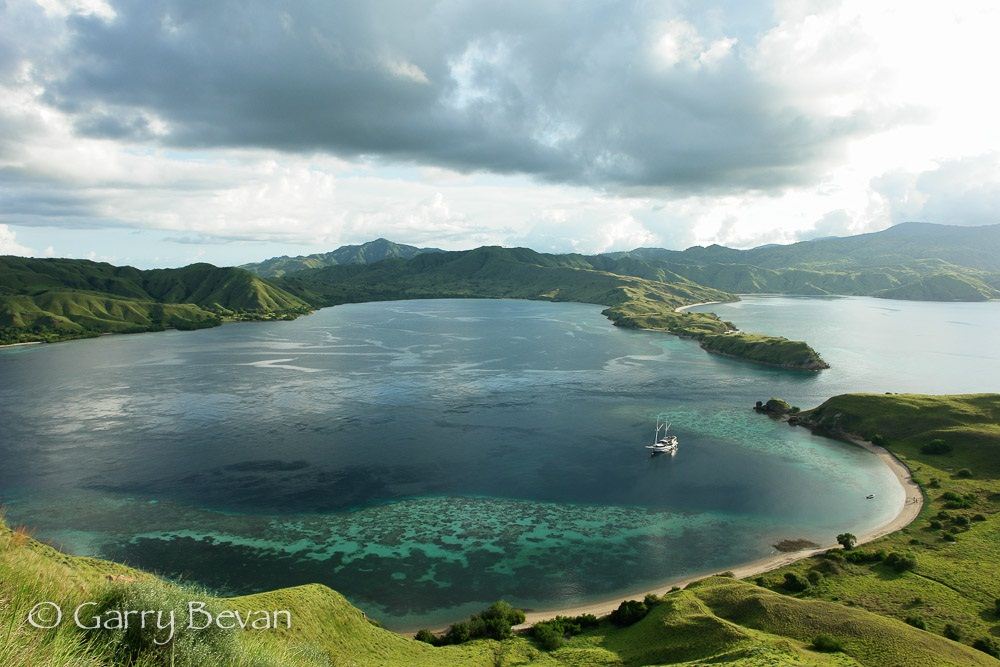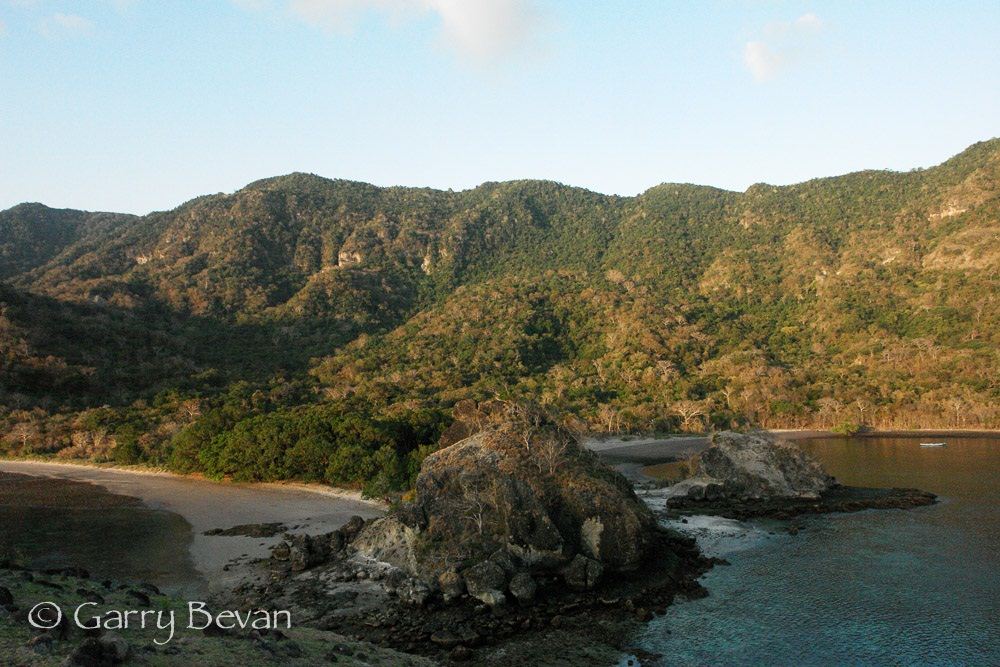Sailing through a World Heritage Wonder – a guide to the Komodo islands
Recently recognised as one of the world’s new “Seven Natural Wonders”, the Komodo National Park is one of Indonesia’s most stunning attractions and offers a plethora of activities for the adventurous yacht. Consisting of the three large islands of Komodo, Rinca, and Padar as well as more than 20 smaller islands, the Komodo National Park is spread over an area of 1700 square kilometres of which 600 square kilometres is terrestrial. Due to the world famous Komodo Dragon (Varanus komodoensis) the world’s largest lizard, inhabiting several of the islands in the area, the region was deemed a National Park in 1980. In 1991, it was nominated as a UNESCO World Heritage site in order to help further protect its unique population of flora and fauna both above and below the ocean surface.
Situated between the major landmasses of Sumbawa to the west and Flores to the east, the Komodo National Park is surrounded by fast flowing currents exchanging nutrient rich water from the Indian Ocean in the south with the beautiful tropical Pacific water from the north. The mix of these two great oceans has created a unique marine environment that is as equally spectacular as the islands they surround. The blend of both underwater and land based attractions make the Komodo National Park a top yacht cruising destination with enough attractions to entertain guests of all ages on either a short or extended cruise itinerary. As the Komodo area is large, with many islands and a variety of “mini ecosystems”, it’s difficult to pick and choose the best attractions to visit. Here are ten of the most interesting and exciting adventures that the Komodo region has to offer.
Interacting with Manta Rays

An activity that should be at the top of everyone’s list: the opportunity to snorkel or scuba dive with graceful manta rays. The majestic manta ray can be found in many areas around Komodo such as Gili Banta, Gili Lawa Laut, Makassar Reef, and of course Manta Alley in the south of Komodo island. With a 14-foot (3-4 metre) wingspan and no stinging barbs or teeth, these gentle giants are often found feeding in large groups at the surface in shallow water areas which are perfect for snorkel or dive interactions. The sense of wonderment at seeing one of these giant aquatic bats gliding through the water, mouth agape, scooping in mouthfuls of plankton, is truly a life changing moment.
Hiking to the Top of Gili Lawa Laut or Gili Lawa Darat
One thing that the Komodo National Park is certainly not short of is stunning views! During the dry season, the islands in the area resemble an African savannah with a twist. The contrast of the arid brown islands, surrounded by rich blue water and shallow fringing reefs, offers endless opportunities for amazing landscape photography. Although the ascent to the top of some of the islands can be somewhat challenging, the treks along these well-worn paths are truly rewarding. The best time to tackle the climbs is early morning or late afternoon when the sun is not too hot; good shoes and sun protection are recommended.
Horseshoe Bay
Nowhere in the Komodo area is the feeling of being in “Jurassic Park” more prevalent than in the iconic Horseshoe Bay at the far southern reach of Rinca Island. From the soaring mist covered peaks that surround this horseshoe shaped bay, through the Komodo Dragons pacing along the black sand beaches, to the deep green coloured water, the entire area pulses with a sense of the primordial. For terrestrial animal encounters, this is by far the best area in the National Park: monkeys, deer, wild pigs, and of course the endemic Komodo Dragon can be observed prowling the small beaches at all times of the day. Several species of large raptors, including kites and sea eagles, nest in the tall trees and are regularly spotted swooping through the air. Horseshoe Bay also offers some of the signature diving experiences in the National Park with several well-known dive sites such as Cannibal Rock and the Yellow Wall of Texas. The narrowness of the bay means that strong winds are in constant flux so vigilance is required when anchoring.
(end of page 1)


